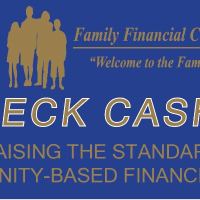Not sure if Liberty Tax Service is right for you?
Talk to a Franchise Advisor who can match you with your perfect franchise based on your goals, experience, and investment range.
Talk to an Expert
Liberty Tax Service
How much does Liberty Tax Service cost?
Initial Investment Range
$49,700 to $71,400
Franchise Fee
$25,000
JTH Tax LLC d/b/a Liberty Tax Service offers a franchise program to operate tax return preparation offices utilizing special marketing techniques and operating procedures.
Enjoy our partial free risk analysis below
Unlock the full risk analysis to access 9 more categories covering 100+ risks.
Liberty Tax Service April 22, 2025 FDD Risk Analysis
Free FDD Library AI Analysis Date: July 16, 2025
DISCLAIMER: Not Legal Advice - For Informational Purposes Only. Consult With Qualified Franchise Professionals.
Franchisor Stability Risks
Start HereDisclosure of Franchisor's Financial Instability
High Risk
Explanation
The audited financial statements in Exhibit H reveal the franchisor is not profitable. The predecessor entity incurred a net loss of over $98 million in 2023, and the successor entity continued to post a net loss of $3.3 million in 2024. While performance has improved post-restructuring, this lack of profitability could impact the franchisor's ability to support the system, invest in the brand, and fulfill its obligations without continued support from its parent company.
Potential Mitigations
- An experienced franchise accountant must thoroughly review the audited financial statements, including all footnotes related to the recent restructuring and ongoing profitability.
- It is crucial to discuss with your financial advisor the implications of investing in a system whose franchisor is not currently profitable.
- Ask your attorney to evaluate the strength and enforceability of the parent company's Guarantee of Performance.
High Franchisee Turnover
High Risk
Explanation
Item 20 data reveals a significant and sustained rate of franchisee turnover. In 2024 alone, 161 franchised outlets, representing nearly 9% of the system, were terminated, ceased operations, not renewed, or were reacquired by the franchisor. A similar high rate occurred in 2023. This level of churn is a critical red flag that may indicate widespread issues with franchisee profitability, operational challenges, or satisfaction with the system and its support.
Potential Mitigations
- You must contact a significant number of current and especially former franchisees from the lists in the FDD to understand the reasons for this high turnover.
- A business advisor can help you analyze the turnover data in Item 20 to understand the potential failure rate.
- Discussing the implications of this turnover with your franchise attorney is essential before making any investment decision.
Shrinking System
High Risk
Explanation
The franchise system is shrinking significantly. Item 20 data shows a net decrease of 130 franchised units in 2022, 178 in 2023, and another 127 in 2024. This consistent, multi-year decline in the number of operating franchises suggests there may be underlying systemic issues affecting franchisee viability and retention. A shrinking system can lead to diminished brand value, reduced peer support, and questions about long-term sustainability.
Potential Mitigations
- A discussion with your business advisor is needed to evaluate the risks of joining a shrinking franchise system.
- It is important to ask current franchisees about their perception of the system's health and future prospects.
- Your accountant should help you model the potential impact of a declining brand presence on your future revenue.
New/Unproven Franchise System
High Risk
Explanation
While the brand has existed for years, the franchisor entity was acquired by its current parent on January 2, 2024, out of the bankruptcy of its former parent. As a franchisee, you face risks similar to joining a new system, including potential shifts in corporate strategy, support levels, and operational philosophy that are not yet proven over the long term under this new leadership.
Potential Mitigations
- A thorough review of the backgrounds of the new parent company and management team with a business advisor is critical.
- It is important to contact franchisees to gauge their experience with the new ownership and any changes in support or direction.
- Your attorney should analyze the implications of the recent bankruptcy and change of control on your franchise agreement.
Possible Fad Business
Low Risk
Explanation
This specific risk was not identified in the FDD Package. A fad business is one tied to a fleeting trend, which can pose a significant risk to franchisees who are locked into long-term agreements. When consumer interest wanes, the business may no longer be viable, but contractual obligations to the franchisor, such as royalty payments, typically continue. Assessing the long-term demand for a product or service is a crucial part of franchisee due diligence.
Potential Mitigations
- To better assess an opportunity, consider working with a business advisor to research the long-term market demand for the products or services.
- A financial advisor can help you evaluate the business model's resilience to changing consumer trends and economic downturns.
- Asking an attorney to review the franchise agreement's term length against the potential longevity of the business concept is wise.
Inexperienced Management
Low Risk
Explanation
This specific risk was not identified in the FDD Package. Item 2 discloses the business experience of the franchisor's key management. If the leadership team lacks significant experience in franchising or in the specific industry, it can lead to poor strategic decisions, inadequate franchisee support, and an unproven operational model. Prospective franchisees should carefully evaluate the resumes and track records of the key personnel listed.
Potential Mitigations
- A business advisor can help you vet the backgrounds of the management team listed in Item 2.
- Contacting current franchisees to inquire about their direct experiences with the leadership's competence and support is a valuable step.
- Your attorney can help you understand if the franchisor's obligations in the agreement are clear and enforceable, regardless of management's experience level.
Private Equity Ownership
High Risk
Explanation
The franchisor, JTH Tax LLC (Liberty Tax), is indirectly owned by a group of entities, including BP LTCT LLC, which is composed of its former lenders. This ownership structure resulted from the bankruptcy of the prior parent company. Decision-making might prioritize investment returns over the long-term health of the franchise system. The franchise agreement also allows the franchisor to sell the system, potentially to a new owner with different priorities, creating uncertainty for your investment.
Potential Mitigations
- Researching the new parent company's history and approach to managing franchise systems is a task for your business advisor.
- Speaking with current franchisees about any changes in operations or support since the new ownership took over is crucial.
- Your attorney should review the assignment clauses in the franchise agreement to understand your rights if the system is sold again.
Non-Disclosure of Parent Company
Low Risk
Explanation
The franchisor discloses its parent companies in Item 1. The primary parent, LT Holdco, LLC, provides a Guarantee of Performance, and its audited financial statements are included in Exhibit H. This provides a degree of transparency into the financial health of the entity backing the franchisor's obligations, which is a positive disclosure practice.
Potential Mitigations
- An accountant should carefully review the parent company's financial statements to assess its ability to support the franchisor.
- It is wise to have your attorney evaluate the specific terms and enforceability of the parent's Guarantee of Performance.
- A business advisor can help you understand the relationship and flow of funds between the parent and the franchisor.
Predecessor History Issues
High Risk
Explanation
The FDD discloses a significant predecessor event: the bankruptcy of its former parent, NextPoint Financial Inc., in 2023. The franchisor's assets were sold to its lenders as part of this process. This history is critical as it indicates the system has undergone immense financial stress and a complete change of control. While the current franchisor is a new legal entity, the operational history and associated challenges are directly relevant to your investment decision.
Potential Mitigations
- Your franchise attorney must carefully analyze the disclosures in Items 1 and 4 regarding the bankruptcy and sale of the system.
- Discussing the transition from the previous owner with current franchisees can provide valuable insight into the system's stability.
- A business advisor can help you research news and other public information regarding the predecessor's bankruptcy for additional context.
Pattern of Litigation
High Risk
Explanation
Item 3 discloses an extensive and material history of litigation. This includes numerous lawsuits brought by franchisees alleging fraud and wrongful termination, major class-action settlements, and significant actions by government agencies like the DOJ and state attorneys general resulting in fines and compliance monitoring. This pattern suggests a history of significant operational and legal challenges for the system, which could pose a risk to your business.
Potential Mitigations
- Your franchise attorney must conduct a detailed review of the entire litigation history disclosed in Item 3 to assess its potential impact.
- Engaging a business advisor to research the public reputation of the franchisor in light of this litigation is recommended.
- You should discuss the specific allegations of fraud and regulatory actions with current and former franchisees.
Disclosure & Representation Risks
Example Risk: Franchisee Financial Obligations
Blue Risk
Explanation
This risk involves the financial obligations that a franchisee must meet, including initial fees, ongoing royalties, and other required payments. Understanding these obligations is crucial for long-term success.
Potential Mitigations
- Carefully review the Franchise Disclosure Document (FDD) and consult with a franchise attorney to fully understand all financial commitments before signing.
- Conduct regular risk assessments
- Implement monitoring and reporting systems
Unlock Full Risk Analysis
Purchase the complete risk review to see all 102 risks across all 10 categories.
Financial & Fee Risks
Example Risk: Franchisee Financial Obligations
Blue Risk
Explanation
This risk involves the financial obligations that a franchisee must meet, including initial fees, ongoing royalties, and other required payments. Understanding these obligations is crucial for long-term success.
Potential Mitigations
- Carefully review the Franchise Disclosure Document (FDD) and consult with a franchise attorney to fully understand all financial commitments before signing.
- Conduct regular risk assessments
- Implement monitoring and reporting systems
Unlock Full Risk Analysis
Purchase the complete risk review to see all 102 risks across all 10 categories.
Legal & Contract Risks
Example Risk: Franchisee Financial Obligations
Blue Risk
Explanation
This risk involves the financial obligations that a franchisee must meet, including initial fees, ongoing royalties, and other required payments. Understanding these obligations is crucial for long-term success.
Potential Mitigations
- Carefully review the Franchise Disclosure Document (FDD) and consult with a franchise attorney to fully understand all financial commitments before signing.
- Conduct regular risk assessments
- Implement monitoring and reporting systems
Unlock Full Risk Analysis
Purchase the complete risk review to see all 102 risks across all 10 categories.
Territory & Competition Risks
Example Risk: Franchisee Financial Obligations
Blue Risk
Explanation
This risk involves the financial obligations that a franchisee must meet, including initial fees, ongoing royalties, and other required payments. Understanding these obligations is crucial for long-term success.
Potential Mitigations
- Carefully review the Franchise Disclosure Document (FDD) and consult with a franchise attorney to fully understand all financial commitments before signing.
- Conduct regular risk assessments
- Implement monitoring and reporting systems
Unlock Full Risk Analysis
Purchase the complete risk review to see all 102 risks across all 10 categories.
Regulatory & Compliance Risks
Example Risk: Franchisee Financial Obligations
Blue Risk
Explanation
This risk involves the financial obligations that a franchisee must meet, including initial fees, ongoing royalties, and other required payments. Understanding these obligations is crucial for long-term success.
Potential Mitigations
- Carefully review the Franchise Disclosure Document (FDD) and consult with a franchise attorney to fully understand all financial commitments before signing.
- Conduct regular risk assessments
- Implement monitoring and reporting systems
Unlock Full Risk Analysis
Purchase the complete risk review to see all 102 risks across all 10 categories.
Franchisor Support Risks
Example Risk: Franchisee Financial Obligations
Blue Risk
Explanation
This risk involves the financial obligations that a franchisee must meet, including initial fees, ongoing royalties, and other required payments. Understanding these obligations is crucial for long-term success.
Potential Mitigations
- Carefully review the Franchise Disclosure Document (FDD) and consult with a franchise attorney to fully understand all financial commitments before signing.
- Conduct regular risk assessments
- Implement monitoring and reporting systems
Unlock Full Risk Analysis
Purchase the complete risk review to see all 102 risks across all 10 categories.
Operational Control Risks
Example Risk: Franchisee Financial Obligations
Blue Risk
Explanation
This risk involves the financial obligations that a franchisee must meet, including initial fees, ongoing royalties, and other required payments. Understanding these obligations is crucial for long-term success.
Potential Mitigations
- Carefully review the Franchise Disclosure Document (FDD) and consult with a franchise attorney to fully understand all financial commitments before signing.
- Conduct regular risk assessments
- Implement monitoring and reporting systems
Unlock Full Risk Analysis
Purchase the complete risk review to see all 102 risks across all 10 categories.
Term & Exit Risks
Example Risk: Franchisee Financial Obligations
Blue Risk
Explanation
This risk involves the financial obligations that a franchisee must meet, including initial fees, ongoing royalties, and other required payments. Understanding these obligations is crucial for long-term success.
Potential Mitigations
- Carefully review the Franchise Disclosure Document (FDD) and consult with a franchise attorney to fully understand all financial commitments before signing.
- Conduct regular risk assessments
- Implement monitoring and reporting systems
Unlock Full Risk Analysis
Purchase the complete risk review to see all 102 risks across all 10 categories.
Miscellaneous Risks
Example Risk: Franchisee Financial Obligations
Blue Risk
Explanation
This risk involves the financial obligations that a franchisee must meet, including initial fees, ongoing royalties, and other required payments. Understanding these obligations is crucial for long-term success.
Potential Mitigations
- Carefully review the Franchise Disclosure Document (FDD) and consult with a franchise attorney to fully understand all financial commitments before signing.
- Conduct regular risk assessments
- Implement monitoring and reporting systems
Unlock Full Risk Analysis
Purchase the complete risk review to see all 102 risks across all 10 categories.




